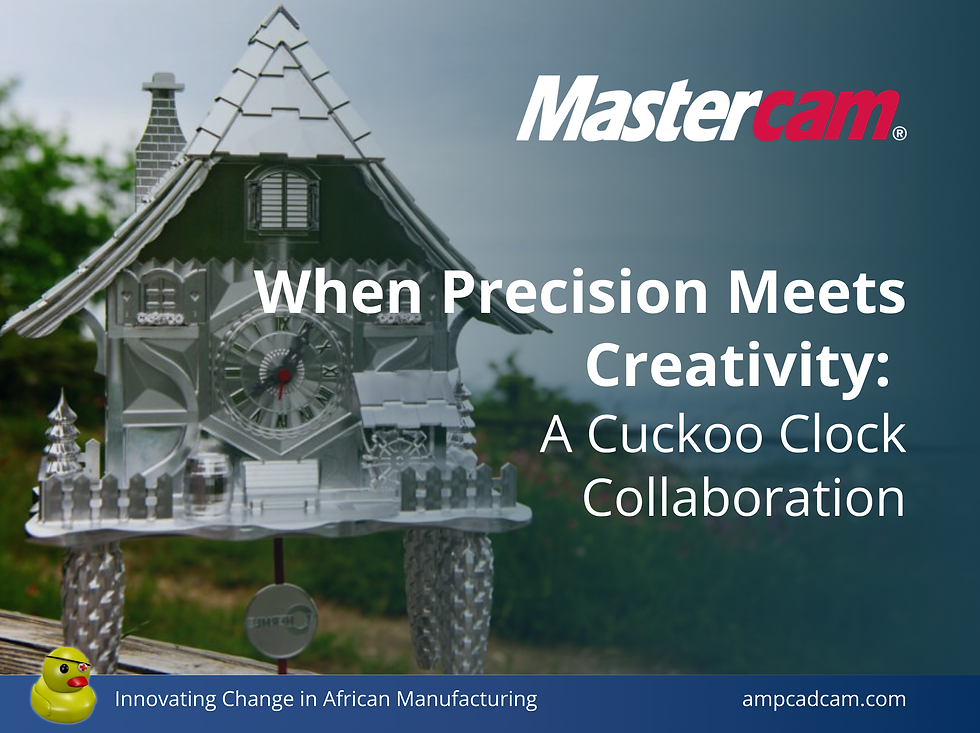The Evolution of CNC Machining: From Manual to G-Code Automation
- AMP Team

- Dec 8, 2023
- 3 min read
Tracing the Journey of Precision Engineering
In the landscape of manufacturing, CNC (Computer Numerical Control) machining stands as a testament to the relentless pursuit of precision and efficiency. This journey, from labour-intensive manual methods to sophisticated G-code-driven automation, chronicles a revolution in how we shape the world around us. This post delves into the evolution of CNC machining, highlighting the transformative impact of G-code and automation on the industry.
The Origins: A World of Manual Craftsmanship
The story of CNC machining begins in an era dominated by manual craftsmanship. Machinists relied on hand-operated tools, requiring skill, patience, and an eye for detail. Every cut, turn, and drill was a testament to human expertise. While these methods were effective, they were inherently limited in speed, consistency, and the ability to replicate complex geometries.


The Advent of Numerical Control: The Seed of Change
The concept of Numerical Control (NC), which sowed the seeds for modern CNC machining, emerged in the post-WWII era. John T. Parsons, in collaboration with the Massachusetts Institute of Technology (MIT), developed the first NC machines. These machines used punched tape to direct the machine's movements, a significant step towards automation. However, these early systems were rudimentary and lacked the flexibility and ease of use that modern CNC machines possess.


The Introduction of G-Code: A New Language of Precision
The real transformation began with the development of standardised programming languages for these machines, with G-code being the most prominent. G-code (short for 'geometric code') revolutionised how machines were instructed. It allowed for precise control over machine tools, dictating movements, speeds, and other operational parameters with unprecedented accuracy. This development not only streamlined the machining process but also opened up new possibilities in terms of complexity and design.

The Leap to CNC: Integration of Computers
The integration of computers in NC systems marked the birth of CNC machining. This leap forward brought about a significant increase in the capabilities of machine tools. CNC machines could now interpret G-code and execute complex sequences of operations with minimal human intervention. The precision and repeatability of CNC machines far surpassed that of manual machining, leading to consistent quality even for the most intricate designs.
Advancements in G-Code and CNC Technology
Over the years, G-code and CNC technology have seen continual advancements. Modern CNC machines are equipped with advanced software, high-speed internet connectivity, and user-friendly interfaces. The evolution of CAD (Computer-Aided Design) and CAM (Computer-Aided Manufacturing) software has further streamlined the process, allowing for the quick translation of digital designs into G-code.
The Impact on Manufacturing: Precision, Efficiency, and Diversity
The impact of G-code and CNC automation on manufacturing has been profound. Industries can now produce parts with tolerances measured in microns, something unimaginable with manual methods. The efficiency and speed of CNC machining have drastically reduced production times and costs. Moreover, the ability to manufacture complex and custom designs has expanded the horizons of what can be produced, from intricate aerospace components to bespoke automotive parts.
Looking Ahead: The Future of CNC Machining
As we look to the future, the potential for further advancements in CNC machining is boundless. With the integration of AI and machine learning, we may see even more intelligent and autonomous CNC systems. The ongoing evolution from manual craftsmanship to advanced G-code automation is not just a story of technological advancement but a narrative of human ingenuity and the endless quest for precision and efficiency in manufacturing.





Comments